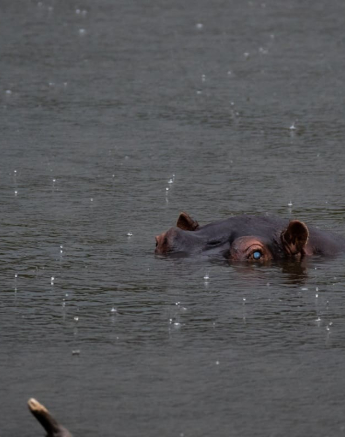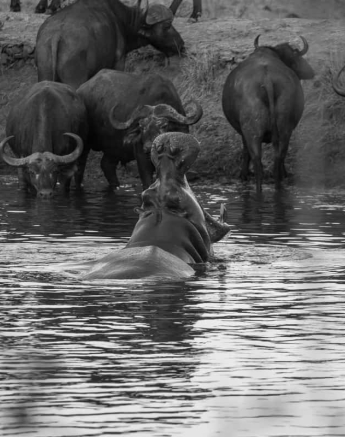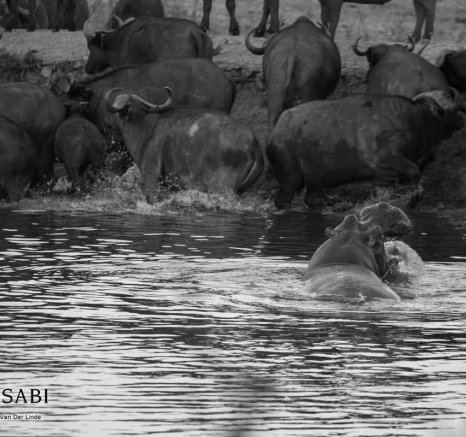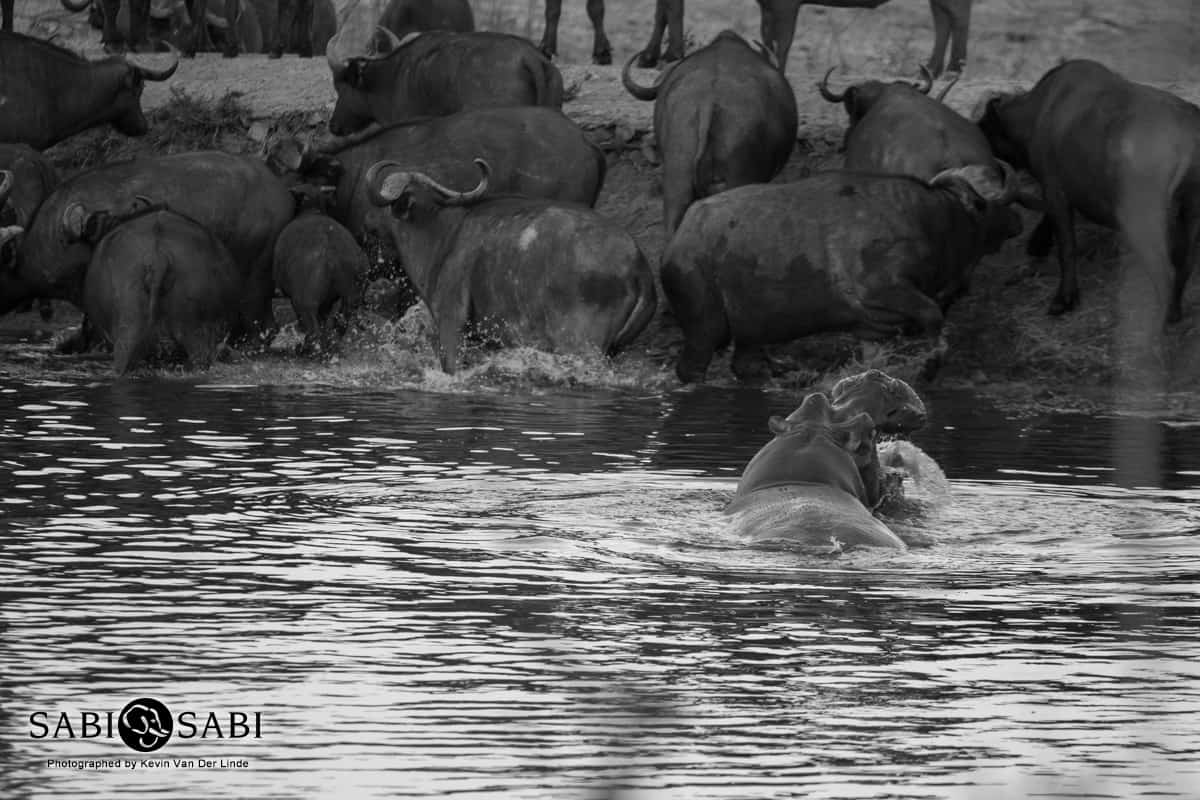Hippopotamus
on Dec 07, 2018Species name: Hippopotamus
Scientific name: Hippopotamus amphibious (Derived from Greek origin hippos meaning "horse" and potamos meaning "river”)
Weight: Male: ±1500kg - ±2000kg Female: ±1300 kg
Shoulder height: ±1.5m
General habitat: Hippos are semi-aquatic land mammals. They need permanent open water like rivers, dams, or pools in rivers where they can submerge, and sandbanks where they can bask in the sun for longer periods of time. They also need enough grazing grass in the area.
Diet: Hippos are grazers of selected grass species as well as young shoots of reeds.
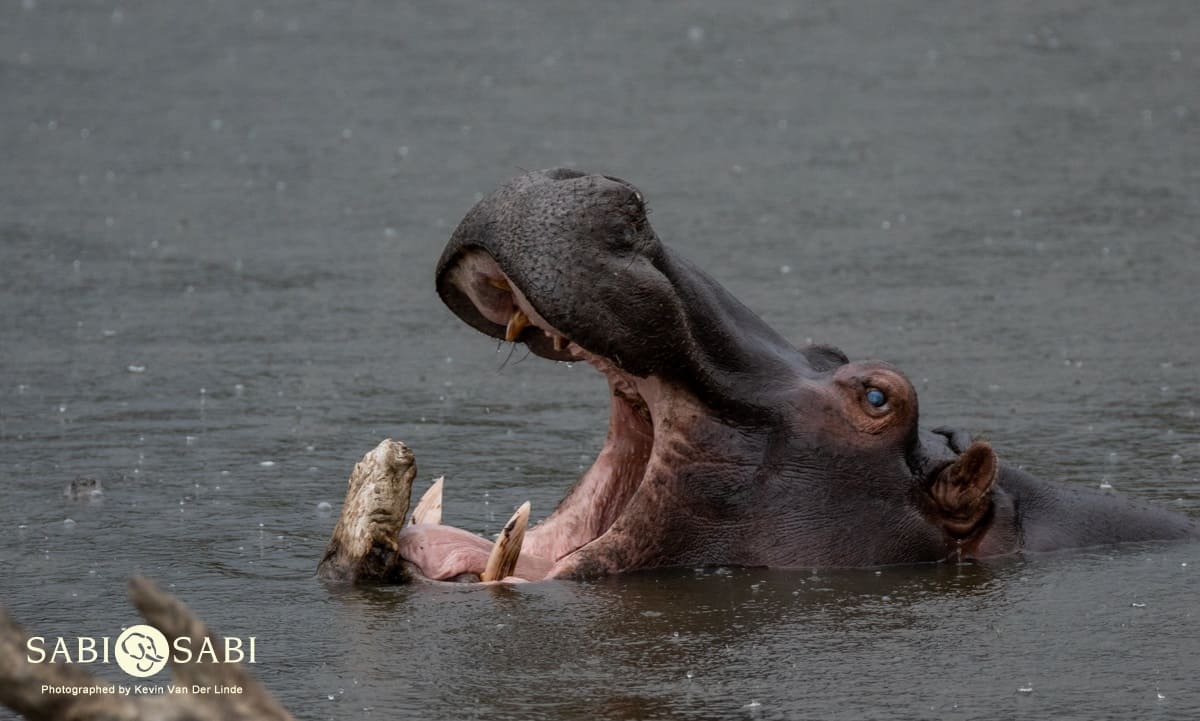
Hippos are often misconceived as being one of the Big 5, but this is not true. Although they are extremely aggressive mammals and defend their territories and young with no hesitation, they are not deemed very dangerous to hunt on foot which takes them out of the Big 5 classification. They are our 3rd largest land mammal, after the elephant and rhinoceros. They are well adapted for their aquatic lifestyle, their eyes, ears and nostrils are all situated on the top of their skull in order to keep their bodies submerged while still being able to breath, listen and keep an eye out for danger.
They spend the majority of their day in water where their skin can be protected from the harsh sun. They do, however, have a solution for the sun if they find themselves out of the water during the day which can be compared to an anti-bacterial sunscreen. It is a liquid which is secreted through their pores from glands beneath the skin. This reddish colour gave it the term ‘blood sweat’. Modern research has concluded that the secretion is made up of two pigments; red hipposudoric acid and orange norhipposudoric acid. Both pigments shield the hippo from sunburn, and the red pigment also has antibacterial properties that are especially helpful after fights, which often leave hippos battered and wounded.
Everything a hippo does, besides eating, will happen in the water. From holding territories, to mating and giving birth. Male territory sizes can vary a lot, ranging from a 250m stretch of river or a smaller territory in a dam that is occupied by many other hippos. They will defend these territories fiercely from any contenders. They are equipped for battle with massive canines and incisors that can do some serious damage and can fight to the death if neither becomes submissive. Males reach sexual maturity at around 7.5 years and females at around 5-6 years and after a gestation period of eight months, the female will isolate herself and give birth to one well-developed calf, weighing in at 25-50kgs, in the water around the onset of the rainy season. She will return to the rest of the pod after about a week or two.
Hippos will leave the water after dark where they can feed on land without having to worry about being exposed to the sun for an excessive amount of time. Although they usually feed nearby or only a few kilometres away from water at night, in exceptional cases they can travel up to 15 kilometres away from water to feed before returning. The distance they will travel depends on the availability of food.
Here at Sabi Sabi we are fortunate to have regular sightings of Hippo at the Earth Lodge waterhole with numbers varying from 2 up to 8, and the occasional sighting at Selati Camp and Bush Lodge. We are also able to view them in the Sabie River, but that is dependent on the level of the river.
My Memorable Sighting
We headed down to the waterhole in front of Earth Lodge one afternoon as it is in the latter part of the day, approaching sunset, that they are generally more active whilst getting ready to leave the water. There was very little activity from the hippos and we sat and watched as they were surfacing every so often for a breath of air. After sitting with them for around 15mins, our tracker Sydney, noticed a large cloud of dust in the distance. It was a very still afternoon without the slightest breeze, so wind could not have been the cause. Slowly we started hearing the soft bellows of a heard of buffalo coming for a drink of water. We positioned the vehicle on the opposite bank to which we thought they would be heading for a drink. Our anticipation was correct and the buffalo started trickling in one by one. It was not long before the opposite bank was lined with buffalo quenching their thirst. One of the hippos were not too happy with their presence, constantly advancing towards them with gaping jaws thrashing the water. The buffalo didn’t seem too perturbed but kept their distance when he came too close. They finished off at the waterhole and headed off into the sunset and all returned to normal around the water’s edge. We all had a good laugh and also loved watching the interaction between two of Africa’s most dangerous mammals.
Photo Content
